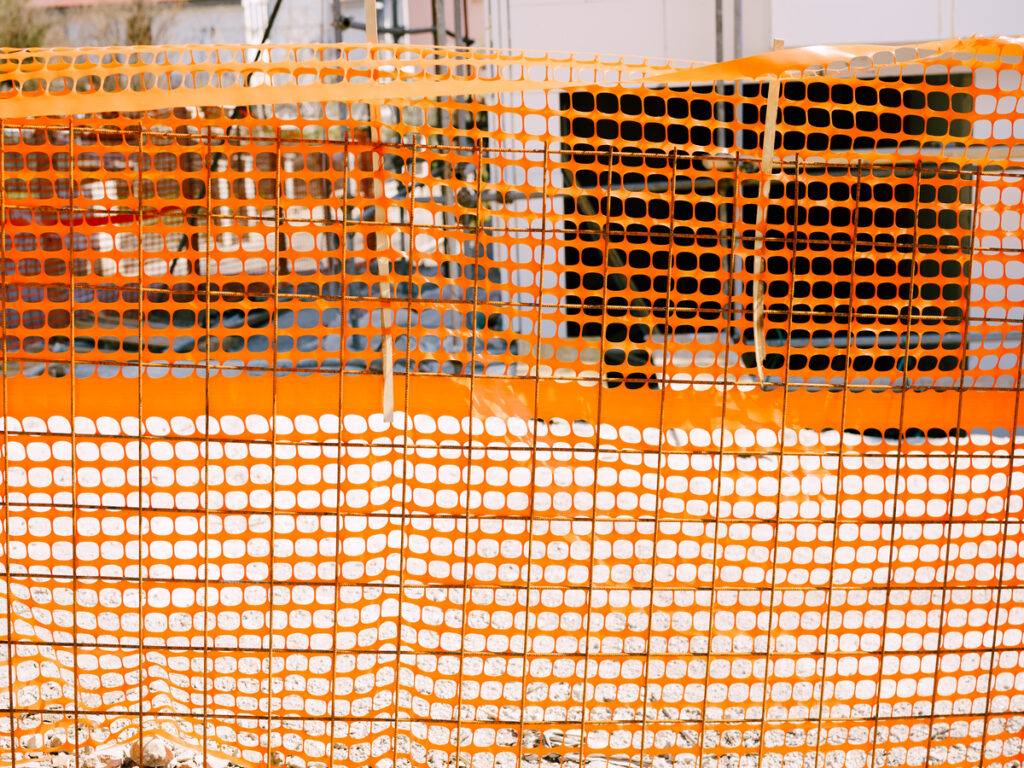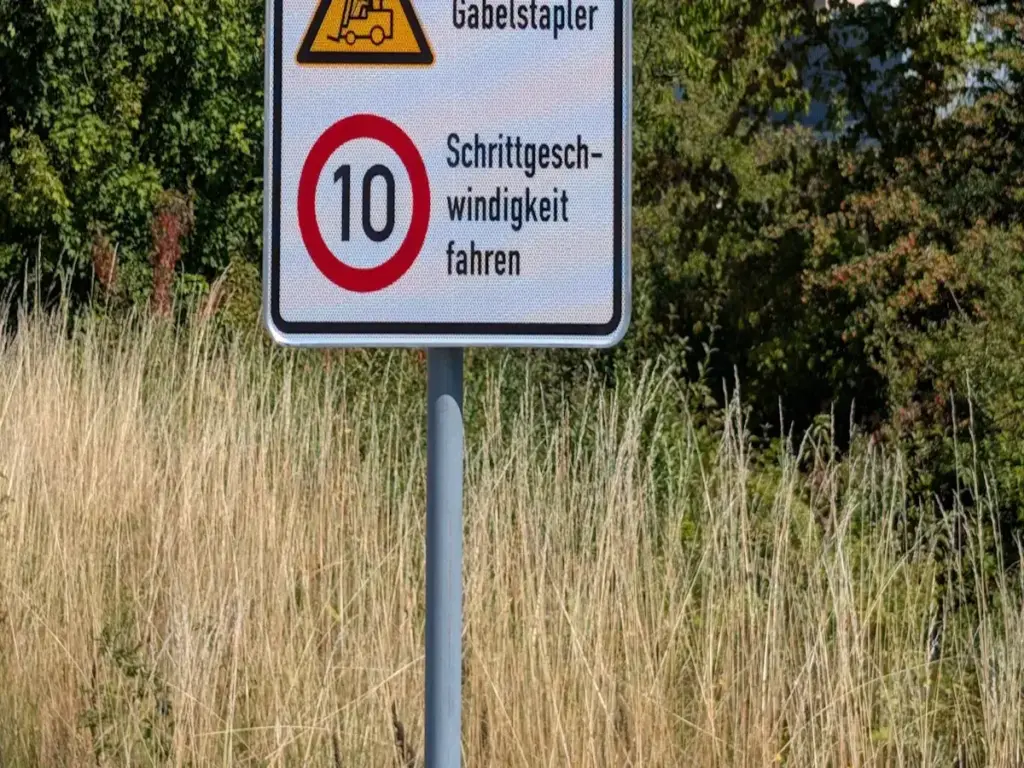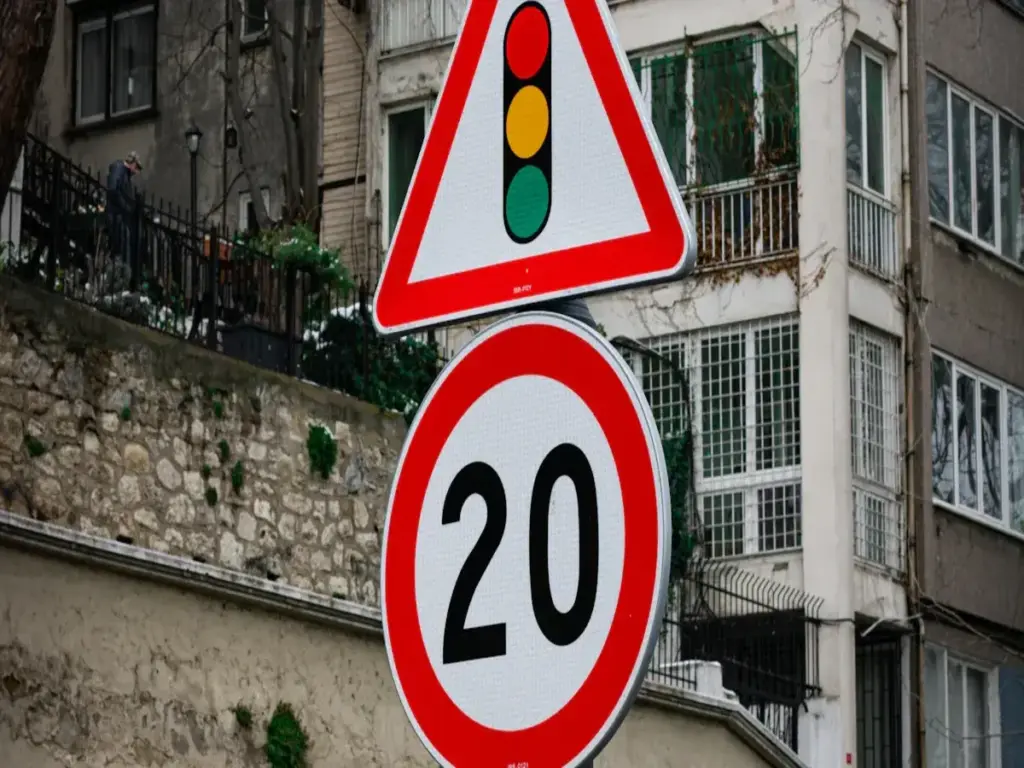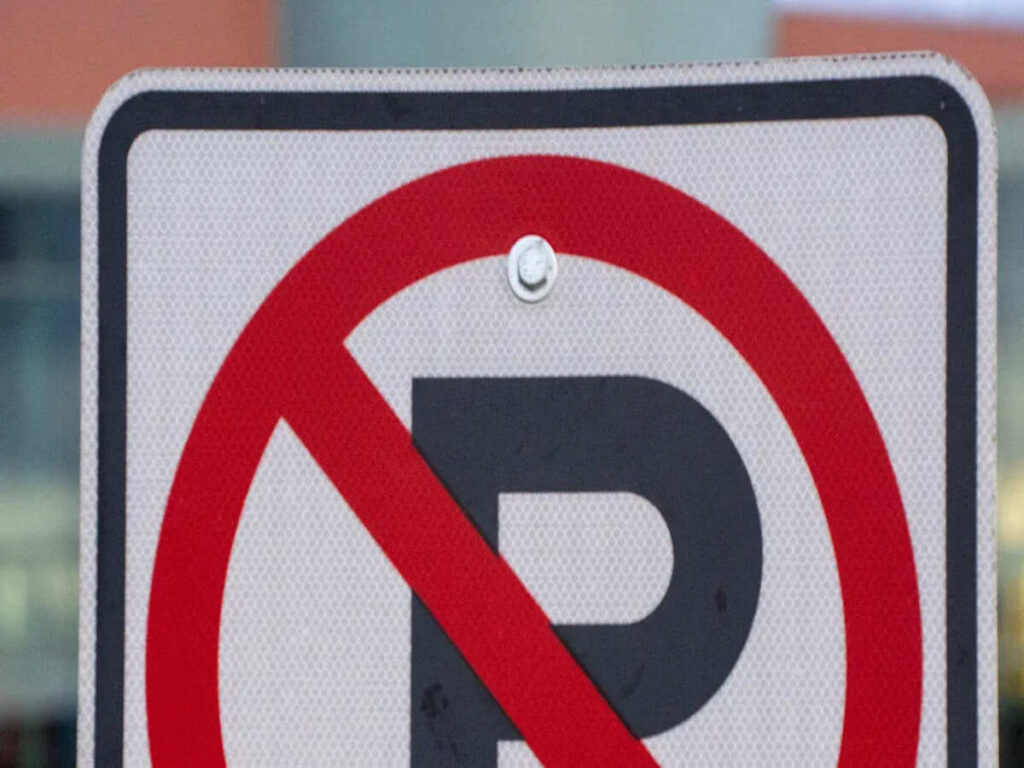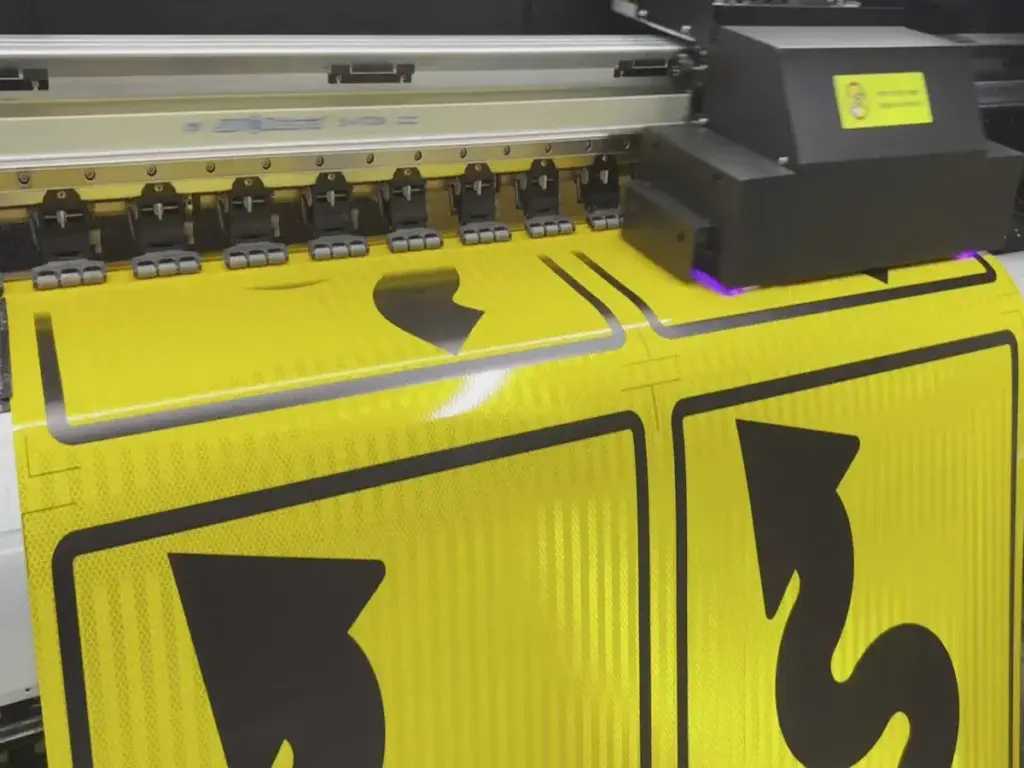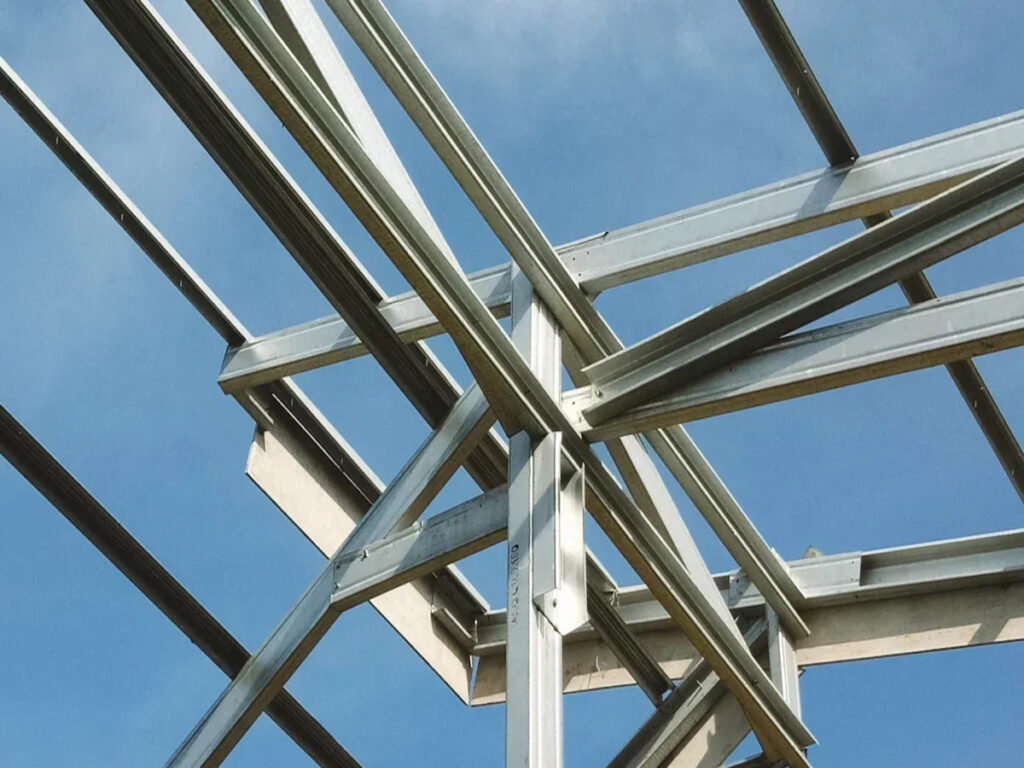
Building steel sign frames requires a high level of precision and durability. From early manual welding to today’s laser cutting and modular assembly, the process has evolved into a refined and efficient system. Steel components must be cut with millimeter-level accuracy, connected using the right method—welded for permanent installations or bolted for flexible setups—and protected with anti-corrosion coatings like hot-dip galvanizing or powder coating.
At OPTRAFFIC, we are committed to standardizing and refining every step of this complex process to deliver road sign frames that are not only strong and reliable, but also built to perform in diverse environments. In this article, we’ll walk you through the key technical steps behind assembling a long-lasting steel sign frame.
Key Takeaways
- Pick the correct tools to make steel sign frames. Tools such as welders and cutters help create strong joints and clean cuts.
- Select good protective coatings. Coatings like galvanization and powder coating stop rust and make the frame last longer.
- Measure carefully before cutting. Checking measurements twice avoids errors that could weaken the frame.
- Check the frame closely after putting it together. Inspecting welds and coatings ensures it is safe and strong.
Tools and Materials Needed to Build a Metal Sign Frame
Important Tools for Building
To build steel sign frames, you need good tools. Each tool helps make the job easier and safer. Here are the main tools you’ll need:
- Welders: These join steel parts together for strong, lasting connections.
- Plasma Cutters and Saws: These cut steel pieces to the right size for the frame.
- Cranes and Hoists: These lift heavy steel parts, making work easier and safer.
- Drills and Fasteners: Drills make holes, and fasteners hold bolted frames together.
- Laser Levels and Measuring Tools: These help align parts for a sturdy, neat frame.
- Scaffolding and Ladders: These let you safely reach high areas on big frames.
Using the correct tools makes building easier and safer. It also helps the frame last longer. Always follow tool instructions for the best results.
Materials Needed for Steel Sign Frames
The materials you pick affect how strong and long-lasting the frame is. Steel parts like tubes, angles, or plates are the main pieces of the frame. These must match your project’s design and strength needs.
Protective coatings are very important too. Galvanization adds zinc to stop rust, and powder coating gives a tough, nice-looking finish. Some makers use both for extra protection. To learn more about how protective coatings directly impact the durability of steel sign frames—and how to choose the right one for your environment—check out our detailed guide: Maximizing the Lifespan of Steel Sign Frames: The Critical Need for Protective Coatings.
Steel frames save money over time. Studies show steel costs less to maintain than wood or concrete. For instance, yearly upkeep for steel is about 1% of its cost, while wood can be 4%. This makes steel great for outdoor signs in bad weather.
By choosing strong materials and using the right tools, you can build a steel sign frame that lasts for years.
Step-by-Step Guide to Assemble a Metal Sign Frame
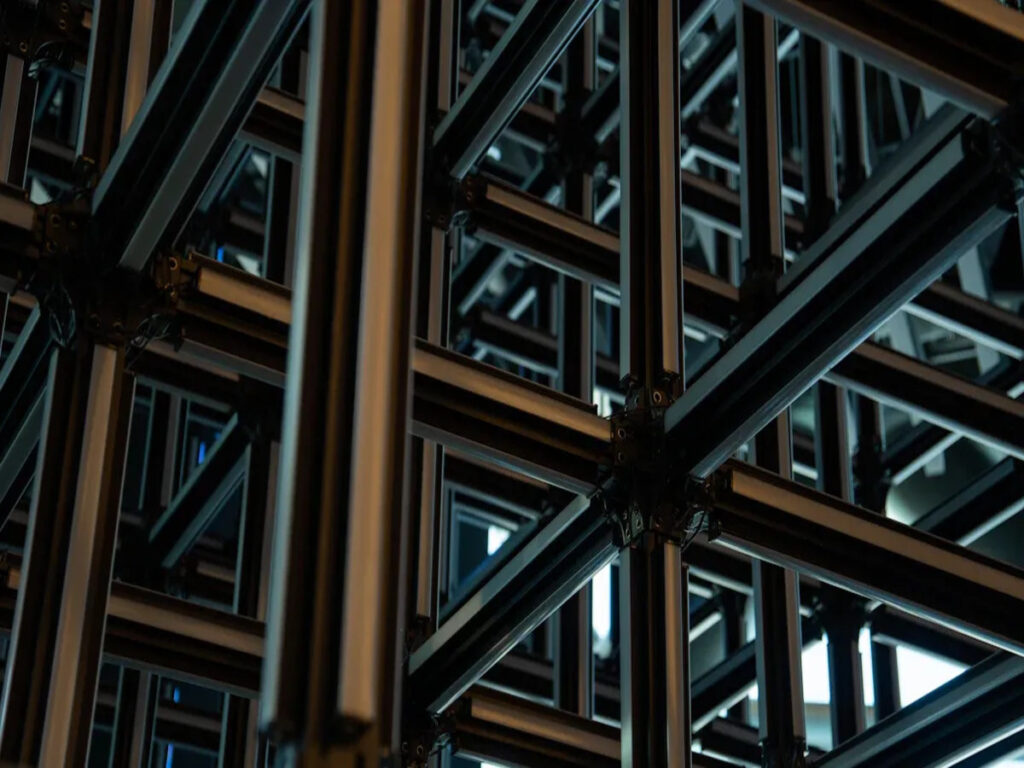
Step 1 – Getting the Steel Ready
Start by preparing the steel parts carefully. This makes sure the frame is strong and fits well. Follow these steps to get the steel ready:
- Making the Iron: Mix limestone, coke, and iron ore in a furnace to make liquid iron.
- Primary Steelmaking: Clean the liquid iron in a furnace to create raw steel.
- Secondary Steelmaking: Improve the steel by adding materials to get the right type.
- Casting: Pour the liquid steel into molds to cool and take shape.
- Primary Forming: Use hot rollers to shape and smooth the steel.
- Secondary Forming: Finish the steel by cutting, welding, or adding coatings.
After shaping the steel, cut it to the needed size using tools like saws or plasma cutters. If bolting is your choice, drill holes in the steel now. Measure carefully to make sure all parts fit perfectly.
Tip: Always check your measurements twice before cutting or drilling. Mistakes can waste materials or cause parts not to fit.
Step 2 – Picking How to Join: Welding or Bolting
Next, decide how to connect the steel parts. You can choose welding or bolting. Each has its own benefits based on your project.
- Welding:
Welding melts steel parts together for strong, lasting joints. MIG (Metal Inert Gas) welding is affordable and works well for many projects. TIG (Tungsten Inert Gas) welding gives a neat, polished look. Welding doesn’t need fasteners, saving time and reducing mistakes. It’s best for permanent frames like highway signs that need to last long. - Bolting:
Bolting uses fasteners to join pre-drilled steel parts. It’s great for frames that need to be moved or adjusted often. Bolted frames are easy to transport and install. You can also replace parts without taking apart the whole frame. This method works well for modular designs.
Note: Use welding for permanent frames and bolting for adjustable ones. Think about where and how the frame will be used before deciding.
Step 3 – Putting the Parts Together
Once the steel is ready and the joining method is chosen, it’s time to assemble the frame. Follow these steps:
- Connect the bottom rail to one side post. Tighten bolts fully if bolting. For frames with bottom panels, attach both rails first.
- Slide the sign panel into the bottom rail and side post. Make sure it fits tightly without gaps.
- Attach the second side post. Tighten bolts or weld the joints securely.
- Check all connections to ensure they are strong and straight. For welded frames, inspect the welds for evenness and strength.
Tip: Use a laser level to keep parts straight during assembly. This helps the frame stay stable and aligned.
By following these steps, you can build a strong and reliable metal sign frame. Good preparation and careful assembly will make the frame last in different conditions.
Step 4 – Adding Protective Coatings
Adding protective coatings is very important for steel sign frames. These coatings stop rust and keep the frame strong for many years. Without them, steel can rust fast when it meets air and water, especially outside.
Why Protective Coatings Are Important
Protective coatings block rain, moisture, and sunlight from damaging the steel. Studies show these coatings help steel last much longer. Adding more layers makes the protection stronger and keeps rust away. To work well, coatings need to be applied correctly and checked often.
Kinds of Protective Coatings
There are different coatings to pick from, depending on where the frame will be used:
- Hot-Dip Galvanizing: Steel is dipped in melted zinc, making a thick, tough layer. This is great for outdoor frames in bad weather.
- Powder Coating: A dry powder is heated onto the steel, creating a smooth, nice finish. It protects well from sunlight and looks polished.
- Dual Protection: Some makers use both galvanizing and powder coating for extra strength and beauty.
How to Apply Coatings
Follow these steps to add coatings the right way:
- Clean the Surface: Remove dirt, grease, and rust from the steel. Use blasting or chemicals for the best cleaning.
- Apply the Coating: Spread the coating evenly over the steel. Make sure it’s thick enough.
- Let It Dry: Allow the coating to dry fully. Drying time and thickness are key for good protection.
Tip: Check the coating often for damage. Fixing small issues early stops bigger problems later.
Step 5 – Final Checks and Packing
After building and coating the frame, check it carefully and pack it well. This ensures it’s ready for delivery and stays safe during shipping.
Final Checks
Careful checks make sure the frame is strong, safe, and looks good. Here’s what to check:
| Quality Check | What to Look For |
|---|---|
| Frame Size | Make sure the frame matches the design size. Use measuring tools. |
| Welds | Check welds for strength and cracks. They should be even. |
| Coating | Ensure the coating is smooth and has no bubbles or peeling. |
| Looks | Confirm the frame looks neat with clean edges and finishes. |
Using tools like SPC (Statistical Process Control) helps keep every frame high quality.
Packing the Frame
Good packing keeps the frame safe while shipping. Follow these steps:
- Protect Edges: Cover sharp edges with caps to avoid damage or injury.
- Include Hardware: Add bolts, brackets, and other parts needed for setup.
- Wrap Securely: Use bubble wrap or foam to protect the frame. Place it in strong boxes or crates.
Note: Add clear labels with handling instructions to keep the frame safe during transport.
By doing these steps, you’ll have a strong steel sign frame ready for use and built to last.
Tips and Best Practices for Assembling Steel Sign Frames
Getting Accurate Measurements
Good measurements are key to a strong steel sign frame. Even small mistakes can cause weak joints or crooked parts. To avoid this, always check your measurements twice before cutting or drilling. Use tools like laser levels and rulers for exact results.
Sometimes, parts don’t fit perfectly during assembly. You can use math to figure out how these small errors affect the whole frame. For example:
| Equation | What It Does |
|---|---|
| $\delta y=\sum_{i=1}^{n}{S}{i}{\delta x}{i}$ | Shows how part errors affect the frame size. |
| ${T}{Y}=\sqrt{\sum{i=1}^{n}{S}{i}^{2}{T}{i}^{2}}$ | Finds the total tolerance for the frame. |
| ${S}{i}={\left.\frac{\partial f}{\partial {x}{i}}\right | }{{x}{i}={X}_{i}}$ |
By using these equations, you can spot and fix problems early. Always aim for perfect measurements so the frame fits well and holds the sign securely.
Tip: Measure twice, cut once. This saves time and materials.
Picking the Best Coating for the Location
The place where the frame will be used decides the coating type. Coatings protect steel from rust and damage, helping it last longer.
For outdoor frames in bad weather, hot-dip galvanizing works well. It adds a thick zinc layer to block water and air. Powder coating gives a smooth finish that resists sunlight and looks nice. Some makers use both for extra strength and beauty.
Rules like ASTM A384 help avoid bending or warping during galvanizing. Following these rules ensures the coating stays strong and protective.
Note: Pick a coating that matches the weather. For example, humid coastal areas may need both galvanizing and powder coating.
Handling and Storing Steel Parts Safely
Taking care of steel parts before assembly keeps them in good shape. Rough handling can cause dents or scratches, making the frame weaker.
Use cranes or hoists to move heavy parts without damage. Store steel in a dry place to stop rust. If the steel is coated, keep it covered to avoid scratches or peeling.
The Hollow Metal Manufacturers Association (HMMA) suggests careful handling and smart design. These tips help keep steel parts in top condition.
Tip: Sort steel parts by size and type when storing. This makes assembly faster and easier.
By following these simple tips, you can build strong, good-looking steel sign frames that last in any weather.
Common Mistakes to Avoid When Assembling Steel Sign Frames
Forgetting Protective Coatings
Skipping protective coatings is a big mistake in steel frame assembly. Without coatings, steel can rust and weaken when exposed to air and water. This shortens the frame’s life, especially outdoors. Coatings like galvanization or powder coating protect the steel and keep it strong. Always apply coatings evenly and check for gaps or flaws. Missing this step can lead to expensive repairs or replacements later.
Tip: Pick a coating that suits the weather where the frame will be used. For example, humid coastal areas may need extra protection for longer-lasting frames.
Using the Wrong Tools or Fasteners
Using incorrect tools or fasteners weakens the frame. For example, mismatched bolts or poorly adjusted welding tools can create weak spots. Always use tools and fasteners that match the frame’s design and materials. Workers should also be trained to use tools correctly. Untrained workers often make mistakes, causing delays and higher costs.
Skipping Quality Inspections
Not checking quality is a serious mistake that affects safety and durability. Every frame should be inspected to meet design and safety standards. Check welds, bolts, and coatings carefully. Missing these checks can cause weak frames or poor appearance. Clear communication and following standards help avoid these problems.
| Mistake | Problems It Causes |
|---|---|
| Lack of Training | More errors from untrained workers, leading to delays and extra costs. |
| Unclear Standards | Misunderstandings can cause weak frames or design issues. |
| Poor Communication | Teams may make mistakes, delaying the project and increasing costs. |
| Not Using Modern Tools | Old methods can miss problems, leading to rework and wasted money. |
Note: Regular inspections and good teamwork help avoid these mistakes and ensure strong, reliable steel sign frames.
Building a steel sign frame needs care and the right tools. Every step, like cutting steel and adding coatings, is important for strength. Using strong steel and keeping it maintained helps the frame last longer.
Well-made steel frames can last over 100 years. They handle rain, pests, and disasters better than other materials. This makes them great for outdoor signs in tough weather. Choosing good materials and assembling carefully ensures the frame works well for a long time.
OPTRAFFIC combine industry expertise with advanced fabrication techniques to ensure every sign frame we deliver is engineered for strength, safety, and longevity. Whether for highways, commercial properties, or custom installations, OPTRAFFIC steel sign frames for sale are built to endure. Partner with us to ensure your signage stands strong—now and into the future.
FAQ
How Are Steel Frames Put Together?
Steel frames are put together by first cutting steel components to precise dimensions using tools like laser or plasma cutters. The parts are then connected using welding for permanent structures or bolting for modular designs. After assembly, protective coatings such as hot-dip galvanizing or powder coating are applied to prevent rust and ensure long-term durability.
Why are steel sign frames better than other materials?
Steel frames last longer and handle bad weather well. They resist pests and impacts better than wood or concrete. They also need less upkeep, saving money over time.
Can steel sign frames be built without welding?
Yes, bolting is an option instead of welding. Bolted frames are simple to move and let you replace parts easily. This method is great for designs that can be adjusted.
How do coatings help steel sign frames?
Coatings like galvanization stop rust and protect the surface. They shield steel from water, sunlight, and damage, making the frame last longer.
What tools are needed to build a steel sign frame?
You’ll need welders, cutters, drills, and measuring tools. These help make sure the frame is built correctly and stays strong.
How can you make a steel sign frame last longer?
Use strong steel and add protective coatings. Build it carefully and check it often. Regular care keeps the frame in good shape for years.


